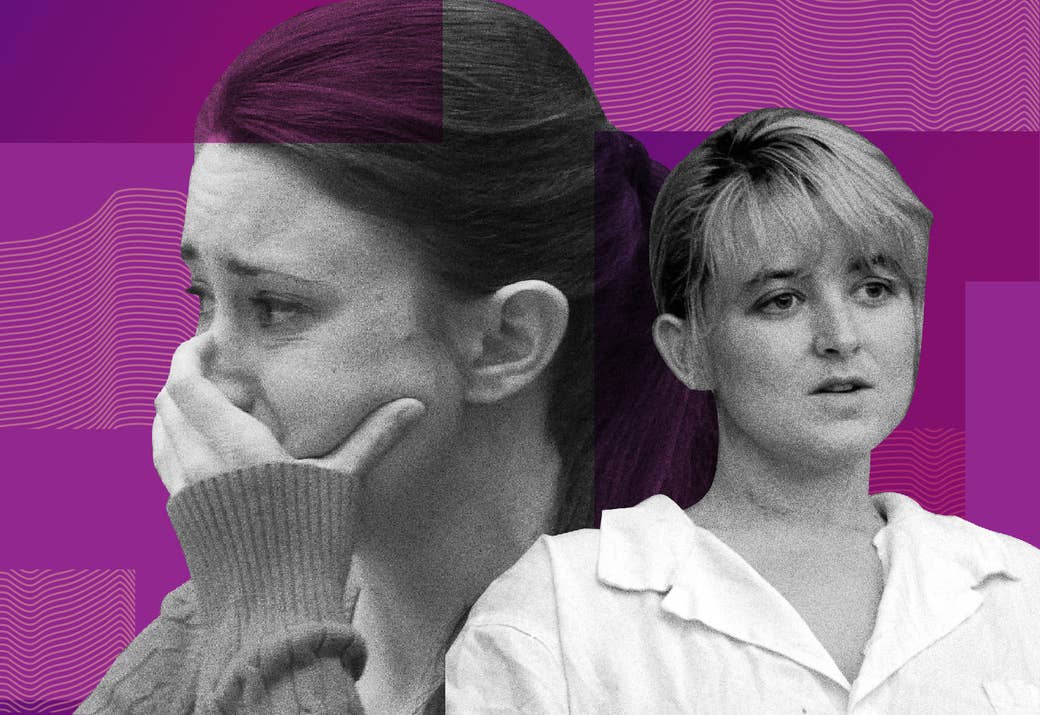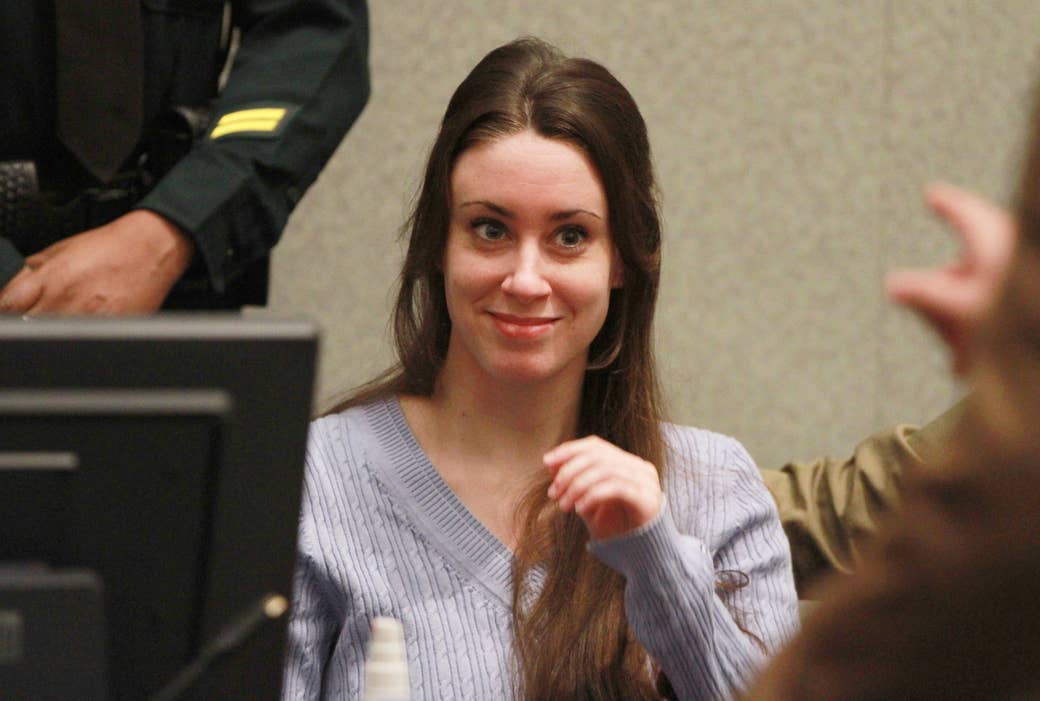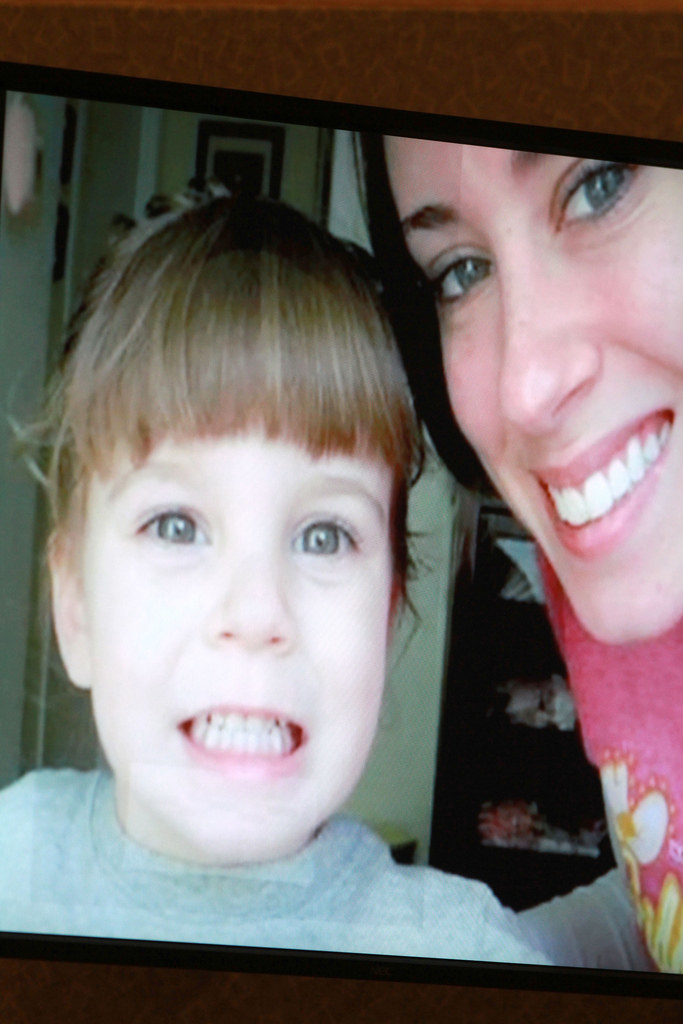
Every couple of years, the strange disappearance or death of a white toddler — JonBenét Ramsey, for instance, or Madeleine McCann — seems to overtake the news cycle. A panic ensues, and even with little evidence to parse, the public must find someone to blame to assuage their anxieties. As the seemingly endless retellings of the Ramsey case makes clear, these stories get a longer shelf life once the cast of characters widens, and they can be framed as mysteries about seemingly suspicious parents, and — even more specifically — about murderous bad mothers.
This particular narrative twist is more easily sold — on cable news, social media, and at trials — when the suspected killer doesn’t fit the conventional mold of innocent, white suburban motherhood. Perhaps she’s too secretive, too talkative, not properly mournful in public, and so outrage soon follows. Perhaps — like Patsy Ramsey, who lived under an “umbrella of suspicion” until her own death — she’s too flashy, too image-conscious, an overbearing stage mom possibly capable of staging a ransom note and committing murder over her daughter’s bed-wetting.
This is, of course, the kind of “bad mom” story built around two other protagonists of true crime melodramas — Casey Anthony and Darlie Routier — whose cases have been getting a second look this summer, on network and cable television, respectively. Anthony’s strange behavior following her daughter’s disappearance in the summer of 2008, including failing to report her missing and lying to police investigators, dominated headlines and social media for years, up to her 2011 trial. The Orlando mother’s antics sparked massive public outrage; Nancy Grace’s theatrically indignant coverage of what she called the “tot mom” case made her career. But it all culminated with Anthony’s acquittal, and she is now the subject of a number of new documentaries, including Oxygen’s The Case of: Caylee Anthony and A&E’s Casey Anthony’s Parents Speak. And Darlie Routier, who was convicted of the 1996 slashing death of two of her children in a Texas suburb, and became infamous thanks to a video of her spraying Silly String at her children’s graves, is now the subject of the first four episodes of the new eight-part documentary The Last Defense, airing Tuesdays on ABC.
The Anthony cable specials are less agenda-driven than The Last Defense, which premiered at the Tribeca Film Festival and is executive-produced by Viola Davis as part of an effort to highlight the failures of the criminal justice system. And despite recent critiques that the new wave of true crime content skimps on structural questions about how that system works, these reconsiderations of the women’s stories offer critical — or at least skeptical — looks at the protocols of the justice system, particularly the behavior of prosecutors.
More explicitly in The Last Defense, the often sexist assumptions underlying unsaintly mother narratives are put on trial. In some ways these new narratives cannot help but counter parts of the “bad mom” frameworks with their own forms of sentimentality. Yet all together — and whatever one might think about their subjects’ guilt or innocence — they make a compelling, sometimes unintentional case that problematic assumptions and a gendered moralism can lead the public imagination, and the judicial apparatus, astray.

Both Casey Anthony and Darlie Routier were publicly defined by iconic images and videos that seemed to capture a larger truth about their stories and their supposedly “real” personalities. In Anthony’s case, it was the pictures of her dancing at a bar in a snug purple dress — in a “Hot Body” contest — days after her daughter’s disappearance. Aided by reports that she’d gotten a “Bella Vita” tattoo, a portrait emerged of an irresponsible single mom: a partying, careless Paris Hilton wannabe.
Routier faced public opprobrium with the notorious video in which she joyously sprays Silly String on her children’s graves, as she celebrated what would have been her son Devon’s 7th birthday, days after her sons’ murders. In Routier’s case the video appeared before she was publicly named a suspect, while in Anthony’s story, the images surfaced after she had been charged. But these scenes of Anthony and Routier behaving “improperly” in their grief, replayed over and over again by the media, were part of a larger “bad mother” moralism that influenced not just the public at the time but also — as these new documentaries make clear — prosecutors and, in some cases, jurors.
Unlike Anthony — whose acquittal sparked the kind of mass outrage not seen since the O.J. Simpson trial — Routier’s conviction slowly became, thanks to her family’s appearances on talk shows, something of a pre–social media cause célèbre about wrongful conviction. The Last Defense, like the recently rereleased documentary The Staircase, is a carefully constructed argument — through interviews with Routier herself, her husband, defense lawyers, prosecutors, and journalists — about Routier’s prosecution and trial. The documentary suggests that Routier was convicted in large part because she was painted as a narcissist and unfeeling mother. This was a story in many ways constructed by the prosecutors, partly based on a compromised crime scene and the result of arguably unethical collaboration between prosecutors and witnesses.

Soon after Routier called 911, claiming an intruder had attacked her and slashed her children, a crime scene investigator, James Cron, was brought in to assist the inexperienced suburban Rowlett police. Based on his first impressions of the crime scene — which, as the documentary points out, had already been compromised by paramedics and cops — he declared that there had not been a break-in. Possibly influenced by the recent denouement of the Susan Smith story — Smith became a household name for drowning her children in a lake — he told the police that the children’s murders were an inside job. The documentary suggests that the crime scene evidence was gathered and interpreted assuming that Routier was the culprit. A sock later found yards away from their house pointed to an intruder, but did not prompt a reconsideration of the police’s initial impression.
Routier's breast implants and jewelry — she wore 10 rings at a time! — were all used as evidence of her mercenary character.
At trial, Routier’s defense lawyer, Doug Mulder, did little to contest much of the questionably gathered and interpreted evidence presented by the prosecution. As he says in the documentary, he was confident about her acquittal: “There was absolutely no reason for this woman to go haywire and kill her children. She wasn’t on drugs, she wasn’t on alcohol; there was no explanation for it and there was absolutely no motive.”
But the prosecutors did offer their version of a compelling motive and narrative: that Routier was a materialistic, vain woman who felt upstaged by her children. “The limelight is no longer on you — it’s on the kids,” the prosecutor says in the documentary. “Children rob you of your freedom.” Routier’s breast implants and jewelry — she wore 10 rings at a time! — were all used as evidence of her mercenary character. “She’s materialistic to the end,” the prosecutor adds. “She’s spending every dime that comes in the door on some new trinket.”
At the trial, nurses testified that Routier didn’t cry and was “whiny” at the hospital — contradicting their own notes from the time of her hospitalization from the attack, which described her as weepy and visibly upset. The documentary reveals that they had all met with prosecutors, who had shown them crime scene photos of the murdered children. As a law professor notes, this tendency for prosecutors to coach and influence witnesses is considered unethical outside the American justice system.
During deliberations, the jury asked to view the “Silly String video,” multiple times. It was her sister, we learn in the documentary, who brought the Silly String to celebrate the child’s birthday, which was preceded by a more solemn ceremony. In other scenes shown in the documentary, Routier seemingly cries on her sister’s shoulder at the gravesite, demonstrating a mixture of grief and joy.
Because of the massive amounts of prejudicial publicity, the trial had been moved from suburban Rowlett to Kerrville, a conservative Hill Country town where Routier’s rather routine suburban life was more easily portrayed as an “outsider” tale of glitzy spending and suspicious superficiality. Routier herself was made to admit on the stand that she didn’t regularly take her children to church, and was criticized for playing the children’s favorite rap song — Coolio’s “Gangsta’s Paradise” — at their funeral. The jury took only eight hours to find her guilty, and she was sentenced to death.
While plenty of mystery haunts the case, the documentary makes clear that the pertinent legal questions about guilt or reasonable doubt were successfully reframed by the prosecution as questions about whether Routier was a “good” or “bad” mother, through a sexist character assassination. This characterization played well with the conservative audience — as an interview with a female juror makes clear — and raises important questions about the kinds of narratives that can propel criminal prosecutions and also about prosecutorial ethics.

Unlike The Last Defense, the three-part Oxygen documentary The Case of: Caylee Anthony is not exactly a polemical reconsideration with a driving thesis. It assembles the same team of experts — including former New Scotland Yard behavioral analyst Laura Richards and retired FBI agent and profiler Jim Clemente — from The Case of: JonBenét Ramsey to act as expert voices interpreting evidence and legal strategies in “common sense” terms for the viewers. In their look at the Ramsey case for CBS, the team ultimately concluded that the victim’s brother, Burke, might have been the culprit, prompting a $750 million defamation lawsuit. This time they ultimately affirm the correctness of Anthony’s acquittal. By exploring the reasons for it, the documentary provides sometimes unintentional insight into the way “bad mom” melodramas influence the public and criminal justice system.
Throughout her own case, Anthony became “the most hated woman in America” because she failed to report her daughter missing for 31 days and then lied to investigators, inventing a nanny who never existed, claiming that she had kidnapped her daughter. After Caylee Anthony’s remains were found, just blocks from the Anthony residence, the anger over the missing toddler turned to outrage toward Casey.
The documentary’s experts interview the forensic examiner who declared the case a homicide. Even though she couldn’t ascertain how Caylee Anthony died, based in large part on the fact that there was duct tape on her mouth, and her mother’s behavior after the fact, the examiner declared the death a homicide. That determination, along with Anthony neglecting to report her missing child and mis-directing investigators, ultimately led prosecutors — perhaps feeling pressure over the public outrage about Anthony — to seek the death penalty. Thanks to the Florida “sunshine” law, which requires evidence handed over to the defense to be released to the public, there was prejudicial publicity, including evidence like the “Hot Body” pictures and footage of her stonewalling police during her interview.
From the opening statement of her trial, her attorney Jose Baez identified and attacked the bad mom narrative: “We’re not here to talk about how inappropriate Casey acted,” he told the jury. “She was an excellent mother, she adored her child, but not for a horrible tragedy, a common tragedy, are we all here today.” Unlike with Routier’s case, in which the idea of an outside intruder as an explanation for her wounds and her children’s deaths was viewed as unconvincing, Anthony’s attorney claimed Caylee Anthony drowned in the family pool, and Anthony — who, Baez argued, was sexually abused by her father, George, from the age of 8 — went into a kind of dissociation.
It is because of the idealization of white femininity and motherhood that these "bad" moms flipping the script become noteworthy.
Though the documentary’s investigators don’t interview Anthony’s lead attorney Jose Baez, his co-counsel, Cheney Mason, explains, “Casey went into what I call ‘Casey world’: She was such a doting mother — you’ve seen all the pictures and all the videos we have; she loved this child ... When there was a child in a disappearance, she was gone, and I don’t know if she’s ever going to come back. Her mind closed down on the fact that this child was dead; she would not accept it.” Oddly, perhaps because they couldn’t interview Jose Baez, The Case Of cast of experts — much like the general media coverage — skimmed over Baez’s specific claims about the dysfunctional family dynamic, including George Anthony’s supposed compulsive lying and alleged sexual abuse of his daughter. (Similarly, the recent A&E special Casey Anthony’s Parents Speak, an intimate interview by Elizabeth Vargas with both her parents, makes clear that each of them has a different understanding of what might have taken place and different feelings about their daughter. It also revealed that Anthony still contacts her mother but has cut off all contact with her father, yet the special doesn’t explore why that might be the case.)
What little evidence there was at the trial — an abandoned car with a “smell of death” (which the documentary experts expose as a scientifically unprovable notion), and the child’s decomposed remains — had been unquestionably compromised through the discovery process. This allowed Anthony’s lawyers to raise reasonable doubts about the evidence’s reliability. While it took the Darlie Routier jury only eight hours to convict her, it took the Anthony jury 10 hours to find her not guilty of all the major charges, except four misdemeanor counts of providing false information to law enforcement. The prosecutor, the documentary’s experts speculate, overcharged Anthony given the limited evidence, perhaps feeling pressure over the public outrage about Anthony, who by the time of trial was made to look like an unfeeling, monstrous mother.

Both The Last Defense and The Case of: Caylee Anthony purport to go beyond the tabloid sensationalism and melodramatic approach of the media and the prosecutors. The seemingly forensically objective title of The Case Of suggests a kind of neutrality, and the investigators self-importantly claim to be giving Caylee Anthony a voice, even as they focus on the mother’s life and behavior. The Last Defense, meanwhile, more plausibly offers itself up as a case study of bigger questions about the failures of the justice system that might result in exonerations.
It is telling that The Last Defense decided to open with a white “bad mom” melodrama that would attract viewers, and made Julius Jones the protagonist of the second case profiled. Jones is a black man sent to death row as a 21-year old in a trial featuring testimony from an informant who cut a deal orchestrated by prosecutors. Both informants and prosecutorial misconduct and overreach are two of the leading causes of wrongful convictions, though they are less tabloid-worthy when they don’t feature the scandalous involvement of a white woman “gone bad.”
It is because of the idealization of white femininity and motherhood that these “bad” moms flipping the script become noteworthy, provoking the combination of identification and repulsion that often lies at the heart of the fascination with true crime. Even these reconsiderations cannot help but get caught up in the maternal melodrama of it all. The Oxygen documentary ends with Anthony’s own words about her daughter from a recent interview. “She is still the central part of my life, the central part of my being,” she says in the controversial exchange, where she still claims not to know what happened to her. The Last Defense often features Routier’s sad, resigned face — still carefully made up, poignantly holding on to the glamour that once helped villainize her, as she reminisces about her children. We search her pained expression for some clue as to what really happened. Could this sweet mother have done this? But, of course, that’s been the wrong question all along. ●
